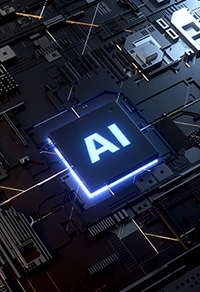Powering Smarter Operations in Buildings
with IoT, Edge AI and Private Networks
By: Bill Dykas

Recognizing these challenges, many building managers are looking to transform their facilities and places of work into smart buildings or structures with automated functions based on owner or manager specifications. At the heart of a smart building are technologies like the Internet of Things (IoT), edge artificial intelligence (AI) and private connectivity solutions. Smart infrastructure redefines how companies manage and optimize physical environments, boosting efficiency and providing cost savings. These technologies also allow organizations to digitize routine processes, automate critical systems and generate real-time insights that drive down operational costs while improving safety, comfort and resource use. This article will explore the three technologies driving the smart building revolution and some of the most notable use cases they enable.
The 3 Core Technologies of Smart Buildings: IoT, Edge AI and Private Networks
In a smart building, connected IoT sensors, devices and systems monitor and manage building operations, such as lighting, HVAC, security and energy usage. These IoT devices collect real-time data, enabling automation and more efficient decision-making. Users can automate and simplify time-consuming tasks using IoT-connected technologies; these tasks can get scheduled in advance, remotely adjusted or rescheduled, and monitored via related technologies. While IoT is certainly the most well-known and prevalent technology within smart buildings, others work in conjunction with it, allowing managers to achieve even more impressive results.
Microcontroller-based edge AI, for example, is empowering smart buildings to get even smarter. Edge AI refers to the shift of AI to devices (like sensors and IoT systems) at the network’s edge. Moving AI to the edge enables local data processing; for example, a facial recognition camera using AI and machine learning algorithms at the edge will perform data compilation locally on the device rather than in a remote server. Other examples of edge AI include sensor analysis, sensor fusion and event detection via audio. Analyzing data closer to its source eliminates the need to send large amounts of data to a cloud server. As a result, edge AI enables local decisions and faster responses while consuming significantly less power and requiring less runtime than a traditional microcontroller. Moreover, innovative building applications that use edge AI can still react to environmental changes even if communications are down.



















